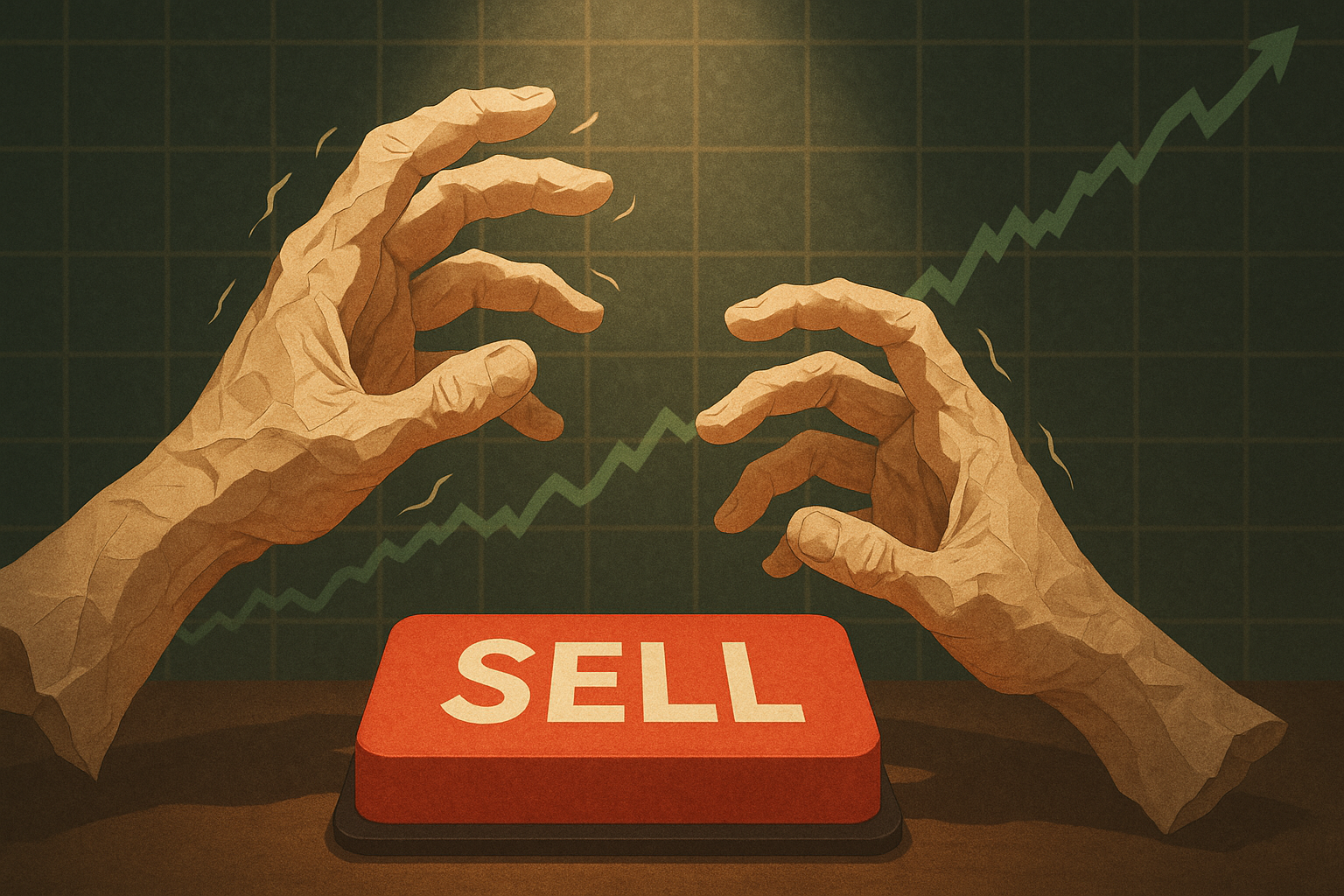I caught myself hovering over the sell button yesterday—again. Another one of those maddening market days where tech stocks inexplicably surge while everything else just... sits there. My position had finally clawed its way back to breakeven after months underwater, and the relief was intoxicating.
Just get me out. Please.
That thought—that desperate urge to escape at the first glimpse of daylight—is precisely why my investment returns remain stubbornly mediocre.
I've got paper hands. Bad ones.
For folks not steeped in market lingo, "paper hands" describes investors who bail on positions at the first sign of trouble—or sometimes, as in my embarrassing case, at the first chance to break even after riding out a downturn. The coveted alternative? "Diamond hands"—those mythical investors with nerves of steel who hold through volatility with conviction that borders on religious.
Look, here's the problem with paper hands: each individual selling decision seems perfectly reasonable in isolation. I'm being prudent! I'm managing risk! I'm removing uncertainty! But add them all up, and you've created a perfect system for buying high and selling low—exactly the opposite of, you know, the entire point of investing.
I've started thinking about this through what I call the "anxiety-opportunity inversion model." (Fancy name for a simple concept, I know.) When markets tank, my anxiety peaks precisely when opportunity is greatest. When everything's soaring, I feel comfortable exactly when future returns are likely shrinking. The correlation is almost perfect—and perfectly destructive to my returns.
The math? Brutal.
JPMorgan ran the numbers once. If you missed just the 10 best days in the S&P 500 over a 20-year stretch, your annual return dropped from 9.5% to 5.3%. Miss the best 20 days? Down to 3%. This is the paper hands tax, and brother, it ain't small.
I learned this lesson the hard way in March 2020. As markets plummeted, I convinced myself I was being "strategic" by moving to cash "temporarily"—just until things "stabilized." (Notice all those convenient quotation marks? That's how you know I'm lying to myself.)
The recovery, of course, was swift and violent. I found myself buying back at higher prices, muttering something about "paying for certainty" to bandage my wounded pride.
What makes paper hands so insidious is how they disguise themselves as wisdom. We're not panicking, we tell ourselves. We're being responsible adults. But often what we're really doing is managing our emotional discomfort rather than optimizing our returns.
And it's not just us retail schlubs. Professional fund managers suffer from the institutional version of paper hands too. The career risk of looking foolish in the short term often outweighs potential long-term benefits of contrarian positioning. Keynes nailed it decades ago: "Worldly wisdom teaches that it is better for reputation to fail conventionally than to succeed unconventionally."
So what's a paper-handed investor to do? I've been experimenting with a few approaches:
- Automating investments to bypass my emotional circuitry entirely
- Deliberately scaling into positions during downturns (harder than it sounds)
- Maintaining a decision journal that forces me to articulate why I'm selling
- Setting predetermined exit points before entering positions
- Keeping a "regret portfolio" that tracks investments I prematurely abandoned
That last one—the regret portfolio—has been particularly illuminating, if painful. That Bitcoin position I sold at $8,000? Those Amazon shares I unloaded during the 2018 correction? My Tesla stake liquidated in 2019 because "valuation matters"?
Collectively, they would have outperformed my actual portfolio by a factor I'm too embarrassed to specify here. Let's just say I could've been writing this from a much nicer house.
Perhaps the most effective cure for paper hands is simply acknowledging they exist. There's something clarifying about recognizing that my worst enemy in investing isn't market volatility or even bad luck—it's the person who stares back from the mirror each morning.
The markets will do what they do. My job is to get out of my own damn way.
So here's to strengthening these hands. May they eventually become, if not diamond, at least something sturdier than paper. Maybe cardboard? I'd settle for cardboard hands at this point.
Now if you'll excuse me, there's a position in my portfolio that's finally back to breakeven.
And I need to practice not selling it.
